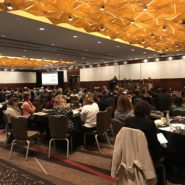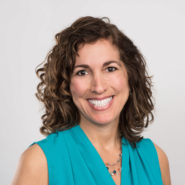AARP Eye Center
‘We Should Talk’: Cross-Sector Conversations on Livable Communities Show Great Promise
By Rodney Harrell, Stephanie K. Firestone, May 5, 2017 12:00 PM
The thousands of community planners who will come together this May at the American Planning Association’s (APA) National Planning Conference are increasingly aware of a demographic trend: Nearly 20 percent of the U.S. population will be over age 65 by 2030.
Translation: Planners need to get together with aging network professionals and talk!

Why? Many aging network professionals are in the business of designing plans with individuals to help them to thrive in their homes and communities for as long as possible; planners, meanwhile, envision and bring form to livable communities.
The conversation, in fact, has already begun. An in-depth discussion of this kind took place in March through a half-day Livable Communities Summit at the American Society on Aging’s (ASA) annual conference in Chicago. AARP sponsored this first-ever joint event between the ASA and the APA, where over 250 professionals from both sectors explored areas of overlap and discussed how to collaborate better moving forward.
Participants discussed a number of tools, including:
- A newly released toolkit from the Home Today, Home Tomorrow Design Challenge (part of the Future of Housing initiative) illustrating “ageless design” features that meet the needs of homeowners at any life stage;
- AARP’s Livability Index, which gauges any American community’s livability under a variety of categories and helps prioritize areas for concentrated improvements; and
- APA’s Aging in Community Policy Guide as well as its new talking points tool.
The summit also engaged participants in a survey on these emerging cross-sector relationships (a follow-up survey and results will be publicly shared at a later date) and presented case studies from a variety of community types across the country where planning and aging practitioners are increasingly intertwining disciplines. Summit organizers were even intentional regarding seating arrangements, mixing planners and aging professionals together to ensure dynamic exchange between those with diverse perspectives.
Participants discussed issues and opportunities that affect many communities:
- the overlap between the work of Area Agencies on Aging and planning and community development;
- options for creating social interaction in public spaces;
- the multiple intersections of zoning and architecture, community space and retrofitting homes;
- exploring housing options with nearby universities and colleges;
- creating ways to engage nontraditional partners;
- making the economic case for livable communities;
- planners working with older adults in meaningful ways;
- intergenerational solutions;
- advocacy training;
- how to approach the intersection of livable communities and the aging population when local government has no interest or awareness; and
- jointly working with builders to see their work through an aging lens.
One participant at the summit articulated that policy changes must “pay attention to the needs and wants of older adults, not what we think is best.” To be sure, these are conversations that should be happening in every community.
Planners everywhere are confronting the challenges posed by aging communities. At the event planners were able to find value in the realization that there are “other planners like me involved in this … there are many people keenly interested in this mission that I can join forces with.” Moreover, using national resources and working with local aging network professionals enhances planners’ ability to address challenges and maximize the benefits of the asset that older adults in the community represent.
The summit dialogue should mark the beginning of a strengthening collaboration. We at the AARP Public Policy Institute welcome the ideas of planners and aging network professionals alike on how to continue these cross-sector discussions at the local, regional and national levels. We also would love to hear from all sectors about their own experiences engaging in these conversations.


Rodney Harrell is the director of livability thought leadership for AARP. He discusses livable community issues @DrUrbanPolicy.
Stephanie K. Firestone is a senior strategic policy adviser covering the areas of health and age-friendly communities for AARP International.
The AARP Public Policy Institute is the home of the Livability Index and many other resources. Visit www.aarp.org/livable for information on making communities more livable.
Follow Dr. Harrell on Facebook, Twitter, Pinterest, LinkedIn and Google+.























































